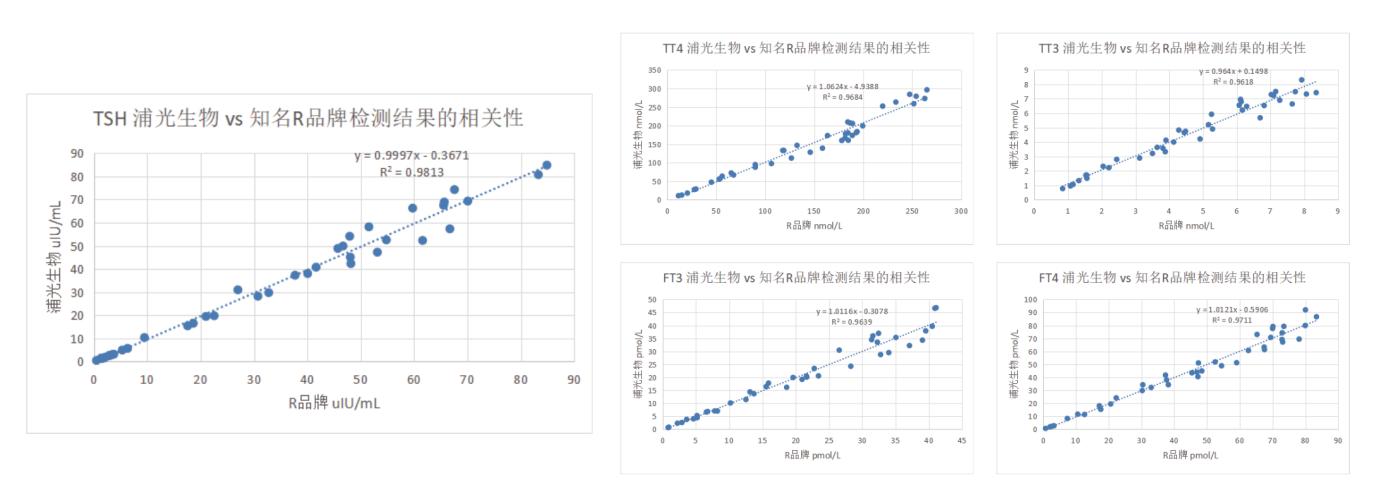Welcome to the fifth generation of chemiluminescence!
The Development History of Immunodiagnostic Technology
Since 1960, the development of immunodiagnostic technology in China has been continuously updated and iterated. Starting from the earliest form of radioimmunoassay, it has gone through the development of colloidal gold, enzyme-linked immunosorbent assay, and chemiluminescence technologies. By continuously improving technology, it can better meet clinical diagnostic needs.
|
|
principle
|
advantage
|
shortcoming
|
application
|
|
Radioimmunoassay
|
3H、125I、131IIsotopes labeling
|
High sensitivity and wide detection range
|
Expensive supplies, radiation contamination, and complex operations
|
Basically eliminated
|
|
immune colloidal gold
|
Colloidal gold labeling
|
Simple, fast, and stable
|
Low sensitivity
|
Hospital and household use in the field of instant detection
|
|
Enzyme linked immunosorbent assay
|
Alkaline phosphatase and other biological enzyme markers
|
Fast and low-cost
|
Low sensitivity, manual work still plays an important role
|
Used by low-level hospitals
|
|
Time resolved fluorescence immunoassay
|
Eu、Tb Labeling of lanthanide elements
|
High sensitivity and wide detection range
|
The operation is more complex
|
Less clinical use
|
|
Chemiluminescence immunity
|
Labeling of chemical light substances such as acridine ester compounds
|
Wide linear range, high sensitivity, high degree of automation, fast, etc
|
The cost of traditional chemiluminescence is relatively high
|
Popularizing in tertiary hospitals can replace the above methods
|
Among these five methods, chemiluminescence immunoassay (CLIA) has gradually become a trend in immunodiagnosis due to its high sensitivity, specificity, and ease of operation.
5th generation chemiluminescence VS1-4 generation chemiluminescence
The immunological detection of 1-3 generations of traditional magnetic particle chemiluminescence often uses enzyme-linked immunosorbent assay (ELISA) plates as solid-phase carriers, and suspended magnetic particles as carriers to improve the detection sensitivity and detection time of antigens and antibodies. Antibodies (or antigens) coated on the surface of magnetic particles can bind to specific antigens (or antibodies) in the sample, forming antigen antibody complexes. Under the action of an external magnetic field, the antigen antibody complexes fixed on the surface of magnetic particles are separated from other substances. After the introduction of labeled substances (enzymes, fluorescence, chemiluminescence), the immunological detection process is completed.
The fourth generation of chemiluminescence mainly involves antigen-antibody specific interactions. Photoinduced chemiluminescence utilizes luminescent microspheres and photosensitive microspheres to covalently crosslink antigens/antibodies, respectively. Photosensitive microspheres contain photosensitive substances, which can transform surrounding oxygen molecules into singlet oxygen (high-energy reactive oxygen species) under specific wavelength laser excitation. The diffusion range of singlet oxygen in water is within 200nm; Luminescent microspheres contain luminescent substances that can emit light signals under singlet oxygen excitation. Two types of microspheres utilize antigen antibody binding to reduce the distance to within 200nm, enabling the transfer of singlet oxygen and inducing photoexcitation of chemiluminescence processes.
The 5th generation chemiluminescence full liquid phase chemiluminescence achieves the immobilization of antibodies without the need for magnetic beads or microspheres. The reaction system is homogeneous, and the nanospheres are uniformly suspended in the liquid phase reaction system, making the reaction rapid, uniform, and sufficient, without the occurrence of local high or low concentrations. It has good stability, no washing or separation.
3 Poclight Biotech implementation of homogeneous chemiluminescence using CRET technology
Poclight Biotech The principle of CRET (Adjacent Contact Chemiluminescence Resonance Energy Transfer) homogeneous luminescence technology is to hybridize nucleic acids coupled to two antibody tails, then remove the hybridized labeled nucleic acids, add graphene to adsorb the excess labeled nucleic acids without hybridization, and then add H2O2 and NAOH. The free labeled nucleic acids containing the detection antibody complex emit strong light in the luminescent solution. The light emitted by the acridine ester adsorbed on graphene is quenched by graphene and can only emit weak light. Unlike the traditional approach of magnetic particles, CRET quenches the light emitted by excess luminescent materials, while traditional magnetic particles clean away excess luminescent materials.
Poclight Biotech The chemical luminescence detection process of CRET technology does not require magnetic separation and cleaning due to the absence of magnetic beads in the reagents. The entire reaction is similar to biochemistry, only adding samples and reagents, and then incubating them.
4 Poclight Biotech Product reagent performance

Poclight Biotech The performance of reagent products is stable, mainly involving inflammation, metabolism, thyroid function, sex hormones, anemia, screening, pathogens, cardiovascular diseases, and cytokine series, meeting the different needs of multiple environments, scenarios, and users.
5 The Future of Fifth Generation Chemiluminescence
The fifth generation chemiluminescence has obvious advantages, such as high speed without magnetic beads, no need for cleaning, low reagent cost, relatively simple instrument structure, similar to biochemistry, and relatively low instrument cost. From supporting role to historical stage, POCT has obvious advantages, and super flux (two-step method of 1000T/h) is possible.

 English
English français
français русский
русский español
español português
português العربية
العربية 日本語
日本語 Türkçe
Türkçe हिंदी
हिंदी Indonesia
Indonesia 







 IPv6 network supported |
IPv6 network supported | 